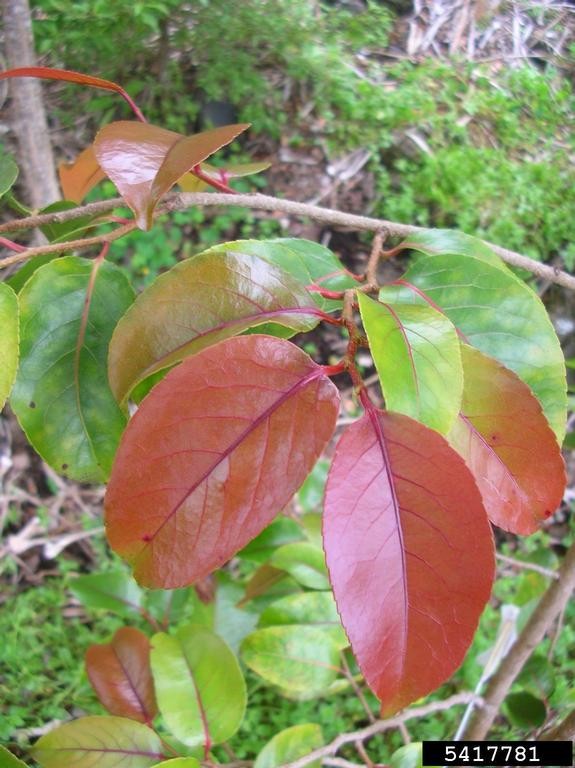Hawai'i brushholly
(Xylosma hawaiiense)

Description
Xylosma hawaiiense is a species of flowering plant in the willow family, Salicaceae, that is endemic to Hawaii. Common names include Hawai'i brushholly, maua, and aʻe (Maui only). Xylosma hawaiiense is a small deciduous tree, reaching a height of 3–9 m (9.8–29.5 ft). The alternate, elliptical leaves are 5–10 cm (2.0–3.9 in) long, 3–7.5 cm (1.2–3.0 in) wide, and produced on thin petioles 1–2 cm (0.39–0.79 in) in length. Young leaves are bronze green, reddish, or copper-colored with red veins, aging to shiny dark green on top and slightly shiny green on bottom. Twigs are initially dark red and mature to a dark brown. Racemes 13–25 mm (0.51–0.98 in) long are produced at the bases of new leaves or the back of leaves. The dioecious flowers are greenish or reddish and 6 mm (0.24 in) in diameter. Female plants produce abundant berries in the summer and fall that are deep red when ripe and about 1 cm (0.39 in) in diameter. Maua can be found in dry, mixed mesic, and, occasionally, wet forests at elevations of 400–1,220 m (1,310–4,000 ft). Xylosma is a genus of flowering plants in the willow family, Salicaceae. It contains around 100 species of evergreen shrubs and trees commonly known as brushhollies, xylosmas, or, more ambiguously, "logwoods". The generic name is derived from the Greek words ξύλον (xylon), meaning "wood," and ὀσμή (osmé), meaning "smell," referring to the fragrant wood of some of the species. The Takhtajan system places it in the family Flacourtiaceae, which is considered defunct by the Angiosperm Phylogeny Group. The leaves are alternate, simple, entire or finely toothed, 2–10 cm (0.79–3.94 in) long. The flowers are small, yellowish, produced on racemes 1–3 cm (0.39–1.18 in) long, usually dioecious, and have a strong scent. The fruit is a small purple-black berry 5–10 mm (0.20–0.39 in) in diameter that contains 2 to 8 seeds. The genus is predominantly native to the tropics and subtropics, from the Caribbean, Central America, northern South America, the Pacific Islands, southern Asia and northern Australasia. Two species, X. congestum and X. japonicum, are found in warm-temperate eastern Asia (China, Korea and Japan). Molecular phylogenetic analysis suggest that the genus Lasiochlamys from New Caledonia may be nested in Xylosma.
Taxonomic tree:







